#cercopithecoidea
Explore tagged Tumblr posts
Text
Living species listed according to how closely related they are to us
(part 1; pictures from Wikipedia, species numbers mostly from Catalogue of Life)


Genus Pan, 2 species: chimpanzee, Pan troglodytes; bonobo, Pan paniscus. Our closest relatives.

2. Genus Gorilla, 2 species: western gorilla, Gorilla gorilla; eastern gorilla, Gorilla beringei
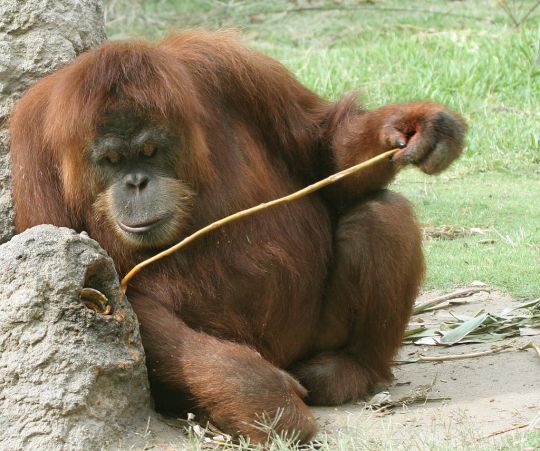
3. Genus Pongo, 3 species: orangutans
(We've reconstructed family Hominidae, the great apes, with a total of 8 species.)

4. Hylobatidae, 20 species: gibbons and siamangs
(We've reconstructed superfamily Hominoidea, apes, with 28 species total. We obviously share with them a great deal of physical similarities, including a lack of tail, a chest wider than it's deep, highly mobile shoulders, and very long childhood that requires extensive parental care and teaching.)
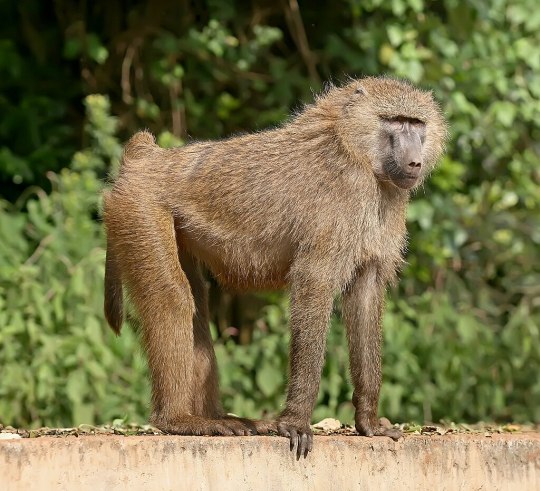

5. Cercopithecoidea, 161 species: the "Old World monkeys" of Africa and Asia, including macaques, baboons, vervets, langurs, colobuses, and proboscis monkeys
(We've reconstructed clade Catarrhina, which among other things all share 32 teeth in the same pattern, nostrils opening downward, and never having a prehensile tail, unlike...)


6. Platyrrhini, 182 species: the "New World monkeys" of South America, including spider and howler monkeys, marmosets, capuchins and squirrel monkeys
(We've reconstructed Anthropoidea, which share flat fingernails, a fused upper lip -- :) instead of :3 -- and a single-chamber uterus undergoing a menstrual cycle)

7. Tarsiiformes, 14 species: tarsiers

8. Strepsirrhini, 143 species: "prosimians", including lemurs, indris, bushbabies, lorises, and the ayé-ayé
(We've reconstructed order Primates, with about 500 species, which among other things share an omnivorous diet, a relatively large brain, fully prehensile hands, and bony eye orbits.)


9a. Scandentia, 23 species: tree shrews 9b. Dermoptera, 2 species: flying lemurs
Unclear which of these two groups is closest to Primates, or whether they form a clade of their own (Sundatheria). This and the next few links are based mainly on molecular evidence.



10. Glires, ca. 2500 species: Rodentia (including mice, rats, squirrels, marmots, beavers, porcupines, guinea pigs, and capybaras) + Lagomorpha (rabbits, hares, and pikas)
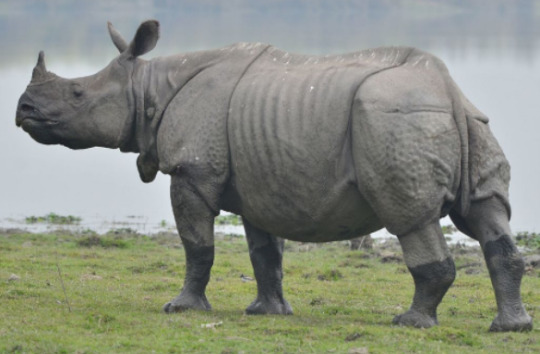


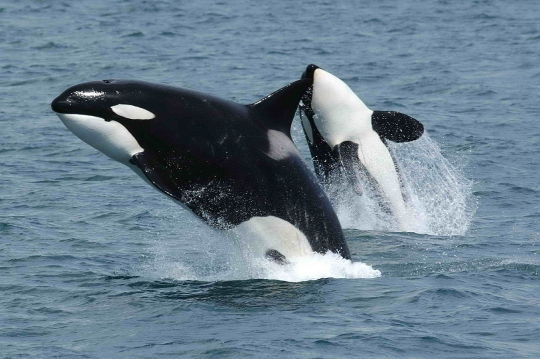
11. Laurasiatheria, ca. 2700 species: a very large and diverse group of mammals, including Carnivora (cats, dogs, hyenas, bears, weasels, seals and sea lions), Cetartiodactyla (ruminants, pigs, camels, hippopotami, whales, and dolphins), Perissodactyla (horses, tapirs, and rhinos), Chiroptera (bats), Pholidota (pangolins), Eulipotyphla (moles, shrews, and hedgehogs), and so on


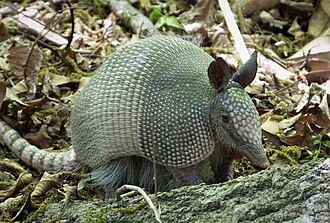

12a. Xenarthra, 37 species: sloths, anteaters, and armadillos 12b. Afrotheria, 88 species: elephants, manatees, ardvaarks, hyraxes, tenrecs and golden moles
Again, these two may branch off in any order from our line.
(We've reconstructed Placentalia, the placentate mammals, with about 5900 species total.)

13. Marsupialia, 335 species: possums and opossums, kangaroos, wallabies, koalas, wombats, bandicoots, Tasmanian devils, and so on
(We've reconstructed Theria, a clade of mammals distinguished by having mammaries with nipples and XY sex chromosomes.)

14. Monotremata, 5 species: the platypus and echidnas
(We've reconstructed Mammalia, mammals, with about 6200 species total. Many distinguishing features, including milk glands, middle ear bones, isolating fur with various skin glands, and warm-bloodedness, a four-chambered heart, and differentiated teeth.)
(to be continued)
107 notes
·
View notes
Text
TMagP 22 Reaction
Hi welcome back, I didn't do this last week because out internet was out all week
As always I am a backer so this was written 16 July, 2024 and scheduled to be posted 18 July 2024
PRE STATEMENT
The first line of this transcript has me cackling
"GWEN is stood dripping in the middle of the OFFICE. LENA remains seated."
Lena being absolutely brutal
good Gwen is going back to data thank god
LENA'S MARRIED?
CASE BEGINS
Canis= Dog Family
Hominidae= Great Apes(Humans, Gibbons, Gorillas, Orangutan, Chimp and Bonobos)
Leporidae= Rabbits and Hares
Cercopithecoidea= Old World Monkeys(baboons, red colobus, macaques, ect.)
"I have enclosed a power point presentation to demonstrate how weird this dude is"
that was said with a laugh and I am uncomfortable at Augustus being exspressive because WE DONT KNOW WHO THIS DUDE
OH ITS THIS THEORY
"ALEXA PLAY BEFORE THE LOBOTOMY"
wheres that tumblr post about the dead fish on the mri table
...are we using morse code to read brain waves?
oh so you stole it and didnt ask first
it just come back as .. / ..-. ..- -.-. -.- . -.. / -.-- --- ..- .-. / -- --- --
He eats one more cookie than he should: uncharacteristic whimsy
YEAH CAUSE YOU WERE TAPPING ON HIS BRAIN
hi this is not how you treat a seizure /hj
"Just another case of unfortunate frontier Science" SIR THAT MANS BRAIN EXPLODED
the absolute lack of empathy from this guy
"The rest was obscured by Herr Schmidt’s cerebrospinal fluid.".... lovely
POST STATEMENT
OH NO SHES BEEN CAUGHT
OOOOO IS THIS WHY THEY BROKE UP???
DOES ALICE HAVE CONTROL ISSUES??
ooo the girl are fighting
BREAKROOM
HOLY SHIT HOLY SHIT HOLY SHIT
WHO?
I THINK I JUST SAW GOD
24 notes
·
View notes
Text
The Library Chapter 3

“Are you done yet?” Your question seemed to have worked. Because the monkey king quickly stopped screaming when he heard your voice. Transitioning from a scared monkey into a calm collected Cercopithecoidea in a matter of seconds, thank you to all the encyclopedias in your library for that knowledge. While the monkey king can treat it like it never happened, you know full well what just happened. And you’re pretty sure your ears are still ringing. You didn’t have time to make sure though, because the monkey king quickly gasps when he sees what stood before him. You couldn’t hold in a smile either, knowing that the travel scroll has finally shown its true power.
“Wait, isn’t this the city?” Monkey king asks, before looking down and taking notice of his form “What the—! Why am I a...?! Translucent golden ghost?” The monkey king only added the ghost part when children phased through him like he’s nothing but air.
“That’s because only our spirits are here. Physically, our bodies are asleep back at my place.” You explained before walking in a random direction. Letting the monkey follow you at his own pace.
“So, this is how the travel scroll works. Gotta say, it’s neat! But why did the scroll take us here of all places?”
“Well.” You started “you said you needed to find a successor. That’s why I asked the scroll to take us where we can find you one.”
“How did you do that? With your mind?”
“You can say that. Now, Monkey king.” You stopped when you both finally reached the center of the city. Spreading your arms wide to show your scale compared to the bustling metropolis.
“Welcome to Megapolis!”
A look of realization then spread across the monkey’s face “Oh! So that’s what the city is called!”
. . . Okay that only means the monkey king knew of this place, but never bothered to know the name of. But you know that’s a completely different story. Setting your arms to cross them, you told the monkey king with no hesitation “You know you don’t have to lie to me. Communication is needed if we’re going to find you successor.”
When the monkey king kept the surprised look on his face, you smirked. Victory is yours this time “One point for me.”
You said before continuing to walk. You then felt the monkey king catch up.
“Woah woah woah! Hold it right there missy! Since when was this a game?” The monkey king’s voice remained playful, but you quickly started to scold yourself internally. This is the monkey king! The monkey king! One that Lady Guanyin sent to you for help! And you just had to play detective just to get back at him for catching your lie about the travel scroll. Immediately, you tried to fix it.
“Sorry! Sorry! I didn’t mean to be rude!” You looked the other way before he could see the red in your face. Did you make it worse?
“You were being rude? I’ll be honest you gotta do better than that. Because if anyone here is the king of rudeness, that’d be me.”
You turned to the monkey king, the red immediately leaving your cheeks. . .
And then you let out a small laugh “Who the heck is proud of that?” you asked. You never really expected that from the all mighty monkey king. That’s what got you laughing in the first place.
“Uh, me? Anyways. You didn’t answer my question, since when did this became a game?”
You pretended to ponder the question before answering “I don’t know really, since I felt like one upping your little observation about my lie.”
The pieces then clicked together in monkey king’s head “Ah, I see how it is. But I’ll say it again, you gotta do better than that. I mean, your lie was bigger than mine. How do you know you just got a lucky guess?”
Oh. It. Is. On. You turned to smirk at the monkey king “Is that a challenge I hear monkey?”
“Why not? I mean, it’s been a while since someone can challenge my observational skills. Might put a little spice in my oh so dreary immortal life.” He then offered his hand for a handshake “What do you say?”
You stared at it for a moment before another suggestion popped in your head “What are the stakes here?”
Now it’s time for the monkey king to ponder on it “How about favors? Winner gets three special favors from the loser. Sounds pretty cool and useful don’t ya think?”
You debated with yourself on this. Hopefully the monkey king isn’t trapping you in some binding contract that you will regret. But on the other hand, he’s been nothing but playful and patient with you. He didn’t even take offense to when you acted smug. A little too smug in your opinion. Maybe he really doesn’t mean you any harm? He is looking for a successor to protect the world and all. No one truly evil would want that, unless the monkey king is lying to you. As far as your observations go though. . .
He's not lying to you. Not one bit. He’s just, hiding somethings.
“Deal.”
You two firmly shook hands. Sealing the deal of your little game of observations, theorizing and wondering what you could both unravel. . . “Wait, what are we doing here again?” You asked when your senses finally came back to you, you’re in the travel scroll. In search of something, or someone important.




#lego monkie kid#sun wukong x reader#sun wukong x y/n#monkey king x reader#monkey king x yn#lmk sun wukong x reader#lmk x y/n#lmk fanart
34 notes
·
View notes
Text
Se also: Monkeys.
If you consider both New World Monkeys (Platyrrhini) and Old World Monkeys (Cercopithecoidea) as "monkeys", you have to also consider all apes monkeys including humans.
For a more thorough explanation see Clint's Reptiles video about Monkeys
"There's no such thing as a fish because you can't define it phylogenetically without also including things that aren't fish"
Man I have bad news for you about lizards. And reptiles in general. And wasps, but I guess that depends on your opinion on wasps. And I don't think you're ready for trees.
17K notes
·
View notes
Text

Japanese macaque (Macaca fuscata)
Photo by Courtney Meier
#japanese macaque#macaca fuscata#macaca#papionini#cercopithecinae#cercopithecidae#cercopithecoidea#haplorhini#primates#euarchontoglires#placentalia#mammalia#tetrapoda#vertebrata#chordata
48 notes
·
View notes
Video
youtube
Oops The Mango
@apeshit
#disclaimer feeding wildlife including monkeys is bad but when a feral colony is dependent on handouts it gets nuanced#or pretend they found a feral mango tree and robbed it#endless forms most beautiful#primates#cercopithecoidea#macaca#the hong kong rhesus colony seems to be in good health and under tnr control fwiw
17 notes
·
View notes
Text
Bit of a study update: Loving it!
Finished assignment 4 today, nothing under 80/100 in grading. Very happy.
It’s hard af, especially trying to remember names like the strepsirrhines and haplorrhines, platyrrhini, cercopithecoidea, etc, but it’s worth it. Love them primates.
9 notes
·
View notes
Text
Just in case you weren’t already aware
the following list shows where the various monkey families (bolded) are placed in the classification of living (extant) primates
ORDER PRIMATES
Suborder Strepsirrhini: lemurs, lorises, and galagos
Suborder Haplorhini: tarsiers, monkeys, and apes
Infraorder Tarsiiformes
Infraorder Simiiformes: simians
Family Tarsiidae: tarsiers
Parvorder Platyrrhini: New World monkeys
Parvorder Catarrhini
Family Callitrichidae: marmosets and tamarins (42 species)
Family Cebidae: capuchins and squirrel monkeys (14 species)
Family Aotidae: night monkeys (11 species)
Family Pitheciidae: titis, sakis, and uakaris (41 species)
Family Atelidae: howler, spider, and woolly monkeys (24 species)
Superfamily Cercopithecoidea
Superfamily Hominoidea: apes
Family Cercopithecidae: Old World monkeys (135 species)
Family Hylobatidae: gibbons ("lesser apes") (17 species)
Family Hominidae: great apes (including humans, gorillas, chimpanzees, and orangutans) (8 species)
5 notes
·
View notes
Text
its like you have primates which is the baseline and is the same in both languages (primaten in dutch). ignoring lemurs and stuff we’re going monkeys. next relevant step is the simiiformes, in english simians, in dutch “apen” which generally translates to monkeys. simiiformes is divided into catarrhini and platyrrhini. just two groups of “apen” in dutch, in english one group consists of only monkeys and the other of monkeys and apes. platyrrhini only has monkeys so its not relevant beyond this so zooming into catarrhini which is subdivided into hominoidea and Cercopithecoidea, which in english are apes and old world monkeys, in dutch its “mensapen” (human monkeys) and a literal translation of old world monkeys (just with the more general “aap” instead).
whats always confused me abt monkey in english is that like it makes no sense to not consider apes monkeys if members of both the platyrrhini and catarrhini groups are monkeys, and apes are a subdivision of the catarrhini, especially bc in dutch we DO look at apes as a type of “aap” or monkey.
also its annoying that the obviously related words aap and ape mean different things even without this confusion
4 notes
·
View notes
Text
Facts About Your Pet Monkey
A small, arboreal mammal of the primates that is native to Africa and Asia. It is part of two superfamilies, Old World monkeys (Cercopithecoidea) and New World monkeys (Ceboidea). The genus Cercopithecus includes about 150 species; most are long-haired (Cercopithecus mitis), although some are hairless or have shorter coats (Grzimek, 1990). Most monkeys are omnivorous, consuming meat, fruits,…
View On WordPress
0 notes
Photo

rlly confused as to why “cercopithecoidea” gets a pass here when spellcheck is screaming at every other word on this document
1 note
·
View note
Photo

M O N K E Y S are haplorhine primates, a group generally possessing tails and consisting of about 260 known living species. . Monkeys are generally considered to be intelligent, particularly Old World monkeys. . There are two major types of monkey: 1. New World monkeys (platyrrhines) from South and Central America. 2. Old World monkeys (catarrhines of the superfamily Cercopithecoidea) from Africa and Asia. . Hominoid apes (consisting of gibbons, orangutans, gorillas, chimpanzees, and humans), which all lack tails and they are not considered monkeys, but they are the A N C E S T O R S.
#photographers on tumblr#original photographers#tumblr#instagram#twitter#street#wildlife#animals#india#indian#incredibleindia#photos#pictures#streetphotography#odisha#tour#tourism#photoblog#wildlifephotography#roadside
1 note
·
View note
Text
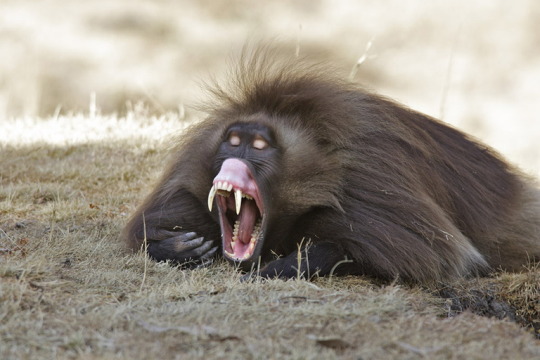
Gelada (Theropithecus gelada)
Photo by Sylvain Cordier
#fave#gelada#theropithecus gelada#theropithecus#papionini#cercopithecinae#cercopithecidae#cercopithecoidea#catarrhini#simiiformes#haplorrhini#primates#primatomorpha#euarchontoglires#boreoeutheria#eutheria#mammalia#tetrapoda#vertebrata#chordata
77 notes
·
View notes
Text
youtube
tag urself i’m the random ass macaque hopping up on the platform at 1:31
#endless forms most beautiful#primates#cercopithecoidea#proboscis monkey#macaque#long tailed macaque#crab eating macaque#nasalis larvatus#macaca fascicularis#i id'd the macaque species right!! macaques used 2 all look the same 2 me but i'm getting there
6 notes
·
View notes
Photo

Bear-Monkey
Kingdom: Animalia
Phylum: Chordata
Class: Mammalia
Order: Primates
Suborder: Haplorhini
Infraorder: Simiiformes
Parvorder: Catarrhini
Superfamily: Cercopithecoidea
Family: Cercopithecidae
Genus: Arctopithecus
Species: A. macropus (”large-footed bear-ape”)
Ancestral species: Macaca silenus (Lion-tailed macaque)
Time period: late Nyctocene to early Solocene (97 million years to 110 million years in the future).
Information: yet another large, carnivorous primate, the Bear-Monkey lives across much of northern Thalassia. Its large hands are webbed, allowing it to both swim efficiently and to walk on top of the snow. Its large muzzle conceals two pairs of large canines for helping it grip onto prey. It feeds primarily on fish, but will also eat land animals as well. Its fur is brown during the spring but turns white during the winter to allow it to blend in with the snow and ice. Its skin, however, is black in color. Unusually for primates, they are solitary animals, living much of their life alone.
0 notes
Text
About Monkey
As demonstrated by the Online Etymology Dictionary, "monkey" may start in a German type of the Reyna-rd the Fox story, disseminated around 1580. In this type of the story, a character named Monkey is the offspring of Martin the Ape. In English, no unquestionable refinement was at first made among "gorilla" and "monkey"; thus the 1910 Encyclopedia Britannica area for "chimp" observes that it is either an equal word for "monkey" or is used to mean a tailless human like primate. Coolly, the articulations "monkey" and "chimp" are comprehensively used then again. Also, two or three monkey creature assortments have "primate" in their normal name, for instance, the Barbary gorilla.
Later in the essential segment of the twentieth century, the idea developed that there were floats in primate improvement and that the living people from the demand could be organized in a game plan, driving through "monkeys" and "chimps" to individuals. Monkeys thusly contained a "survey" while in transit to individuals and were perceived from "primates".
Legitimate requests are by and by more as often as possible reliant on monophyletic get-togethers, that is packs containing the significant number of relatives of a run of the mill forerunner. The New World monkeys and the Old World monkeys are each monophyletic social occasions, yet their mix was not, since it rejected hominoids (gorillas and individuals). Along these lines the articulation "monkey" never again insinuated an apparent legitimate taxon. The most diminutive recognized taxon which contains all the monkeys is the infraorder Simiiformes, or simians. At any rate this furthermore contains the hominoids (gorillas and individuals), so that monkeys are, with respect to right currently apparent taxa, non-hominoid simians. Casually and pop-socially, the term is questionable and all over monkey joins non-human hominoids. Likewise, visit conflicts are made for a monophyletic usage of "monkey" from the perspective that utilization should reflect cladistics.
A social event of monkeys may be regularly suggested as a group or a troop.
Two separate social events of primates are insinuated as "monkeys": New World monkeys (platyrrhines) from South and Central America and Old World monkeys (catarrhines in the superfamily Cercopithecoidea) from Africa and Asia. Primates (hominoids)— involving gibbons, orangutans, gorillas, chimpanzees, and individuals—are moreover catarrhines anyway were customarily perceived from monkeys. (Tailless monkeys may be assigned "primates", erroneously according to introduce day use; thusly the tailless Barbary macaque is now and again called the "Barbary chimp".)
0 notes